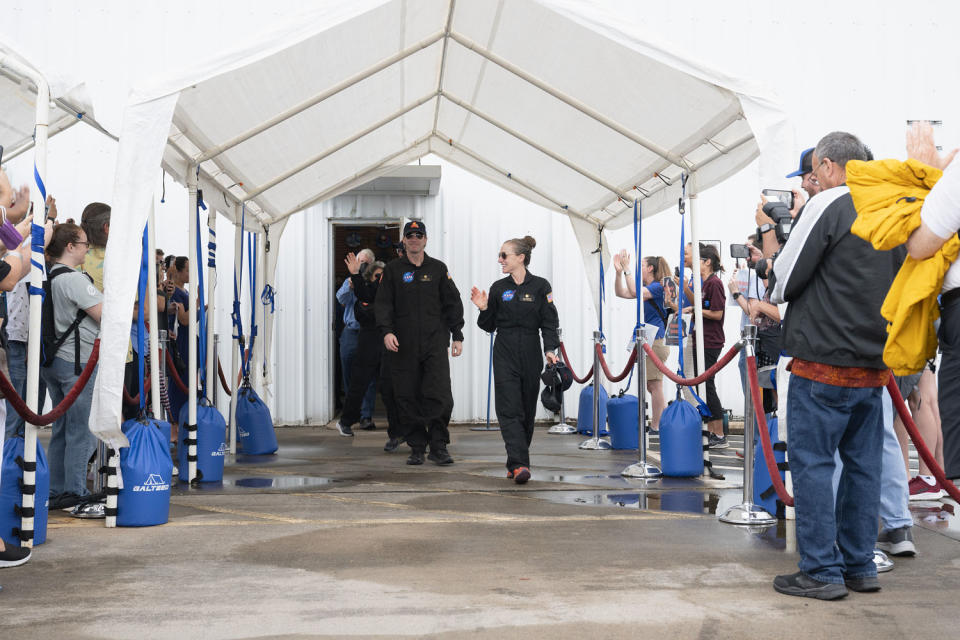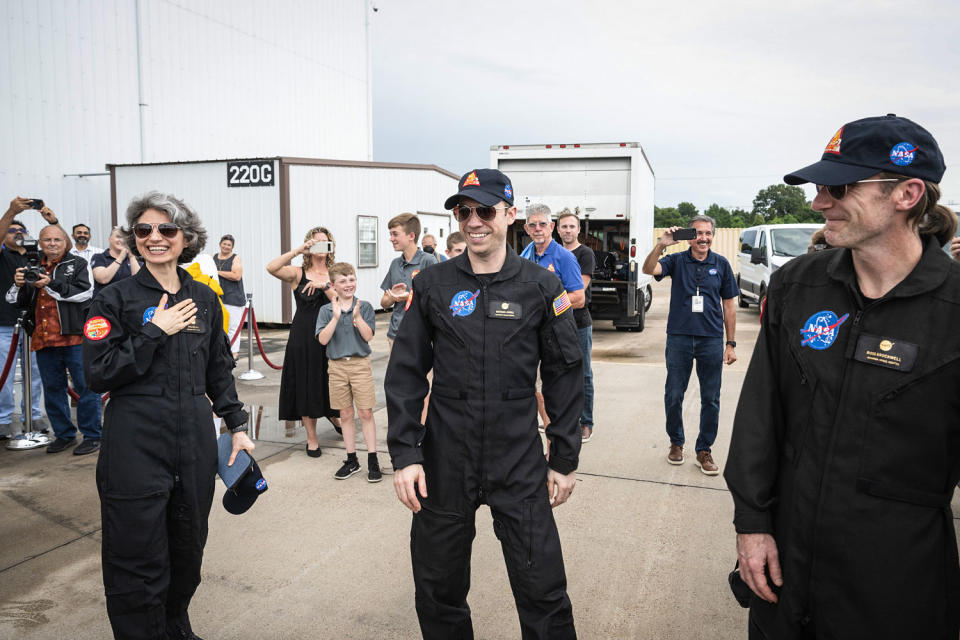Four volunteers, 378 days: NASA completes first mission simulating astronaut life on Mars
A NASA mission to test how living on Mars would stress and test a human crew ended Saturday, with four volunteers emerging from more than a year in a 1,700-square-foot structure.
Kelly Haston, Ross Brockwell, Anca Selariu and Nathan Jones started their journey on June 25, 2023, and spent the next 378 days living in a 3D-printed habitat called the Mars Dune Alpha, which replicates what living on Mars might be like. NASA observed their health and performance to learn how to support a crew during long missions and what risks there may be for humans, especially with limited nutrition.
They also carried out tasks that astronauts on an actual trip to Mars would have, like habitat maintenance, sample collection and robotic operations.
“I am humbled that being away on a one-year Mars analog brought me closer to those I was with and those I left back at home,” said Haston, a research scientist and a registered member of the Mohawk Nation of the Six Nations of the Grand River in Canada. “To everyone, in particular my family, I’m so sorry I wasn’t there for you this year, and I thank you all so very much.”

NASA is developing technology to send astronauts to the red planet as early as the 2030s. The simulated journey was the first of three planned for the habitat as part of NASA’s Crew Health and Performance Exploration Analog, or CHAPEA, missions.
The volunteers were greeted by an applauding crowd as they exited the habitat.
“Hello. It’s actually just so wonderful to be able to say hello to you all,” Haston, the CHAPEA commander, said with a laugh.
The mission sought to see how the group could handle the various challenges expected to confront humans on Mars. The crew dealt with environmental stressors, communication delays and limited resources. They ate shelf-stable food, as well as vegetables they grew while they were living in isolation.
Brockwell, the CHAPEA flight engineer and a structural engineer and public works administrator, said the mission offered a perspective on sustainability.
“I’m grateful for the chance to live the idea that we must utilize resources no faster than they can be replenished and produce waste no faster than they can be processed back into resources,” he said.

“We cannot live, dream, create or explore on any significant time frame if we don’t live these principles. But if we do, we can achieve and sustain amazing, inspiring things like exploring other worlds,” Brockwell added.
Mars Dune Alpha is at NASA’s Johnson Space Center in Houston. The habitat includes a sandbox full of red sand where participants conduct simulated “Marswalks.” The habitat has private bedrooms, a kitchen and two bathrooms. It also has areas for medical treatment, recreation, fitness and work activities, according to NASA.
The second CHAPEA mission will begin in 2025 and the third in 2026.
“I’ve been asked many times, why the obsession with Mars?” said Selariu, a science officer for CHAPEA and a microbiologist in the Navy. “Because it’s possible. Because space can unite and bring out the best in us. Because it’s one defining step that earthlings will take to light the way into the next centuries.”
“To everyone watching, dreaming and cheering for space exploration, thank you,” Selariu said.
This article was originally published on NBCNews.com



